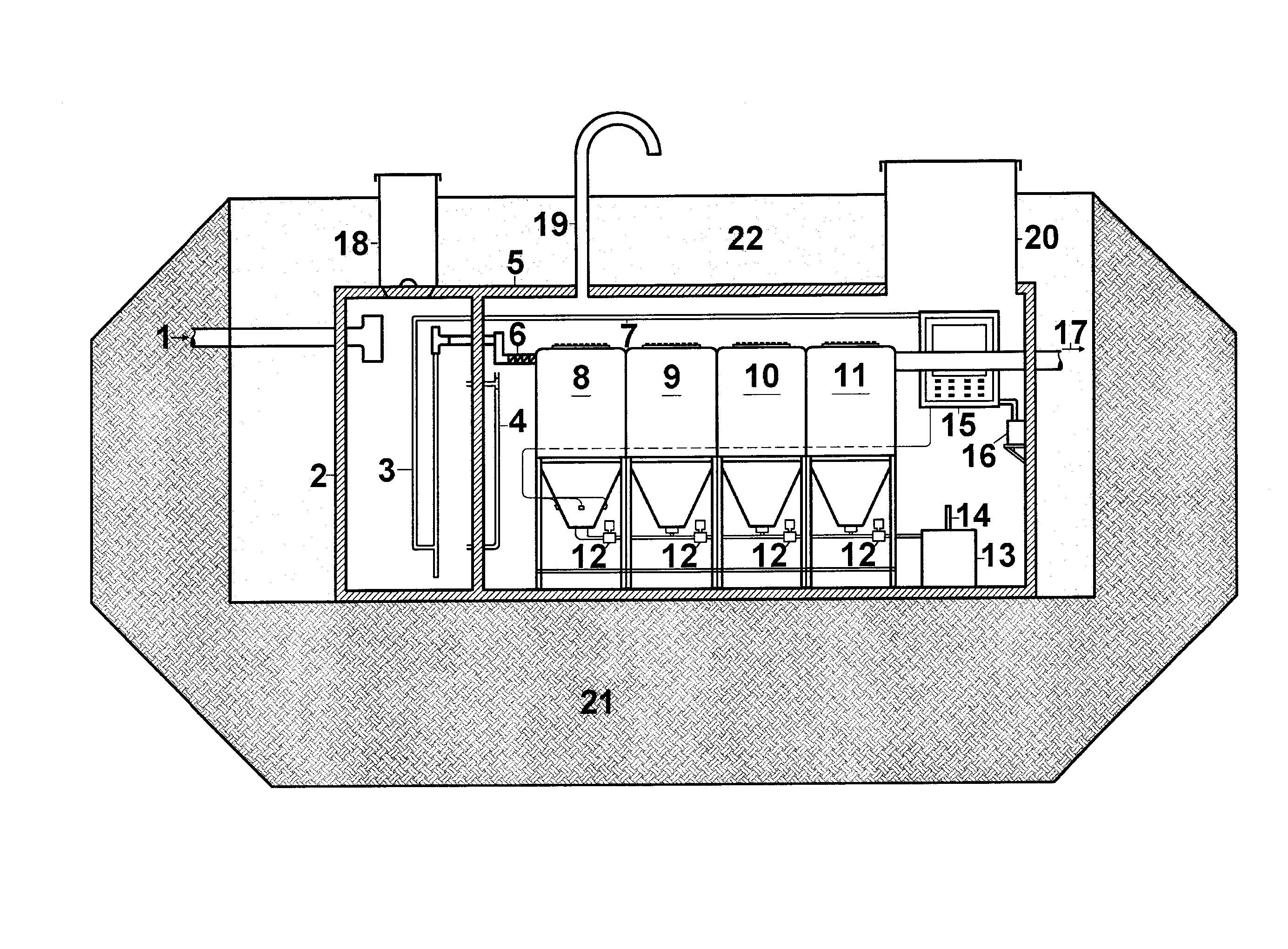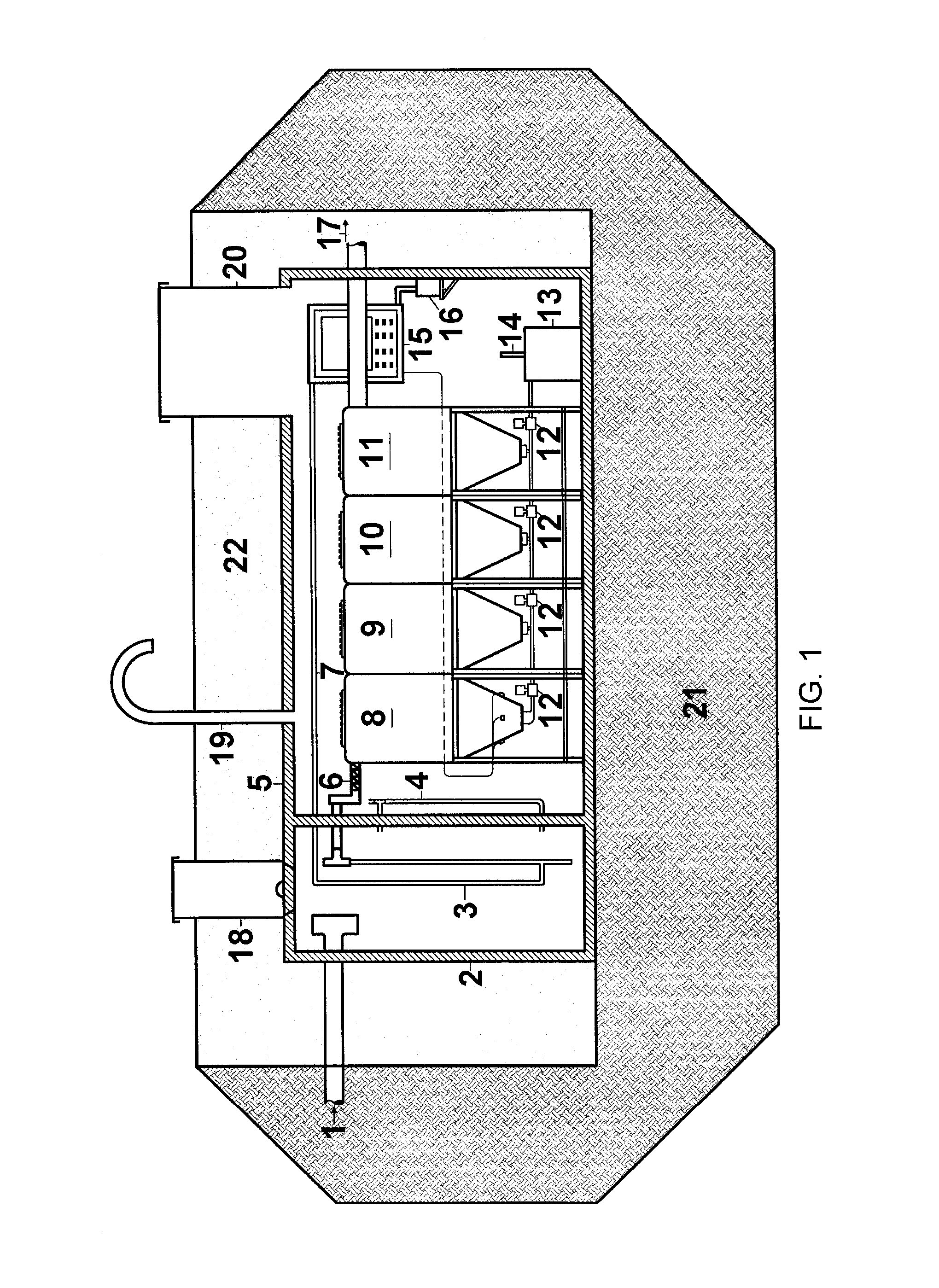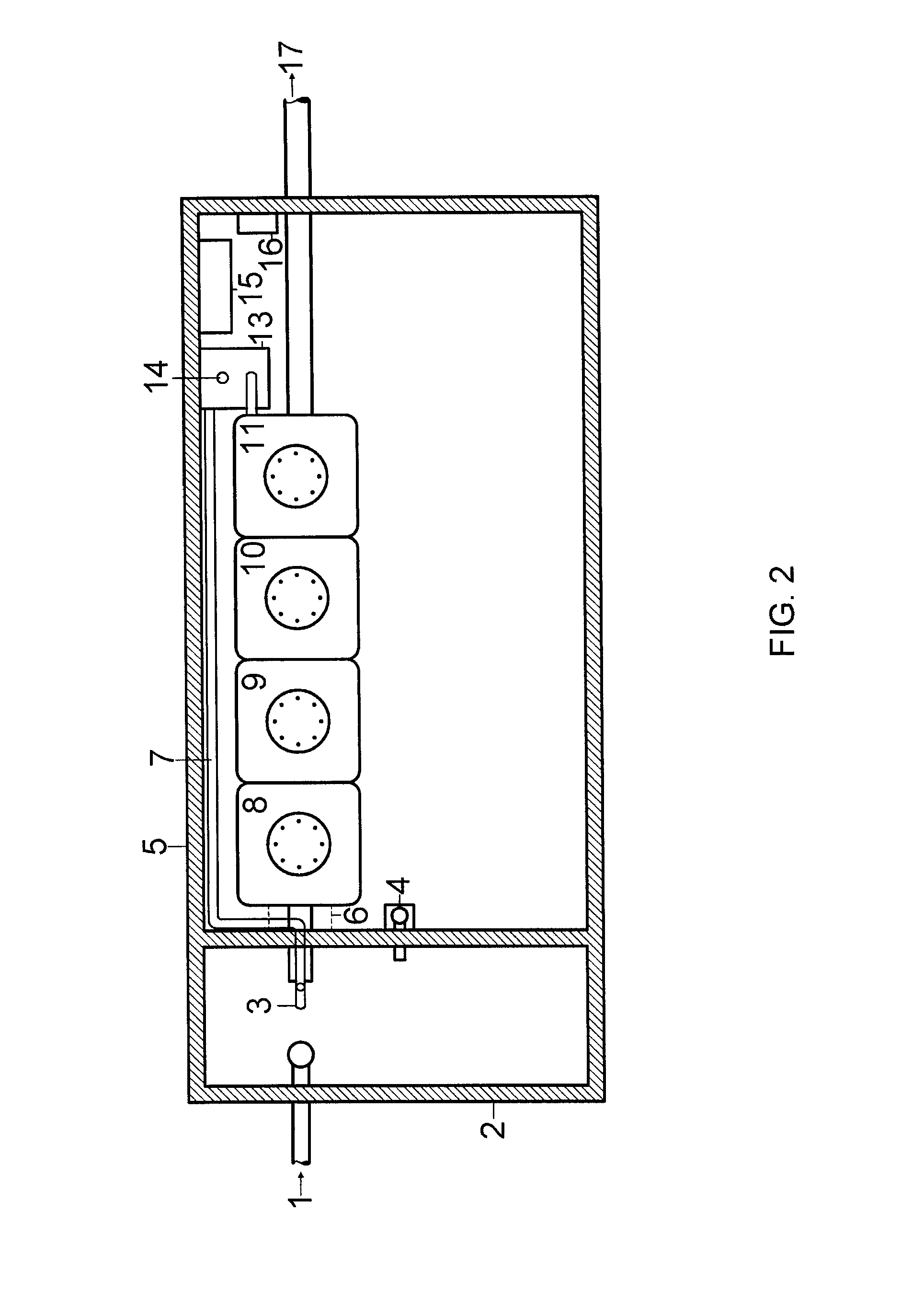Modular individual wastewater nutrient removal system
a nutrient removal and wastewater technology, applied in the field of wastewater treatment processes, can solve the problems of insufficient carbon food sources for bacterial growth, individual septic systems in fractured bedrock aquifers are especially susceptible to elevated nutrient levels, and nitrate is the primary contaminant of concern, so as to prevent interruption from fluctuation in use
- Summary
- Abstract
- Description
- Claims
- Application Information
AI Technical Summary
Benefits of technology
Problems solved by technology
Method used
Image
Examples
Embodiment Construction
[0024]The present invention is a modular, on-site, wastewater treatment system designed to remove over 90% of total nitrogen, phosphorus, biological oxygen demand (BOD), and total suspended solids (TSS). The present invention combines the positive features of both aerobic and anaerobic systems to remove nitrogen along with contaminant specific modules to remove phosphorus and other contaminants as needed. The present invention uses a fixed-film, aerated bio-filter packed with small, buoyant, plastic growth media to convert ammonia to nitrate. The innovative design of this system allows for the complete conversion of ammonia to nitrate, while at the same time eliminating plugging and bio-fouling associated with the majority of existing technologies. In comparison, the present invention uses a compressor / air pump and submerged air diffusers to provide a consistent air flow to a packed-bed, fixed-film bio-reactor, thus achieving complete (99.7%) nitrification.
[0025]The nitrification pr...
PUM
| Property | Measurement | Unit |
|---|---|---|
| Length | aaaaa | aaaaa |
| Flow rate | aaaaa | aaaaa |
| Diameter | aaaaa | aaaaa |
Abstract
Description
Claims
Application Information
 Login to View More
Login to View More - R&D
- Intellectual Property
- Life Sciences
- Materials
- Tech Scout
- Unparalleled Data Quality
- Higher Quality Content
- 60% Fewer Hallucinations
Browse by: Latest US Patents, China's latest patents, Technical Efficacy Thesaurus, Application Domain, Technology Topic, Popular Technical Reports.
© 2025 PatSnap. All rights reserved.Legal|Privacy policy|Modern Slavery Act Transparency Statement|Sitemap|About US| Contact US: help@patsnap.com



